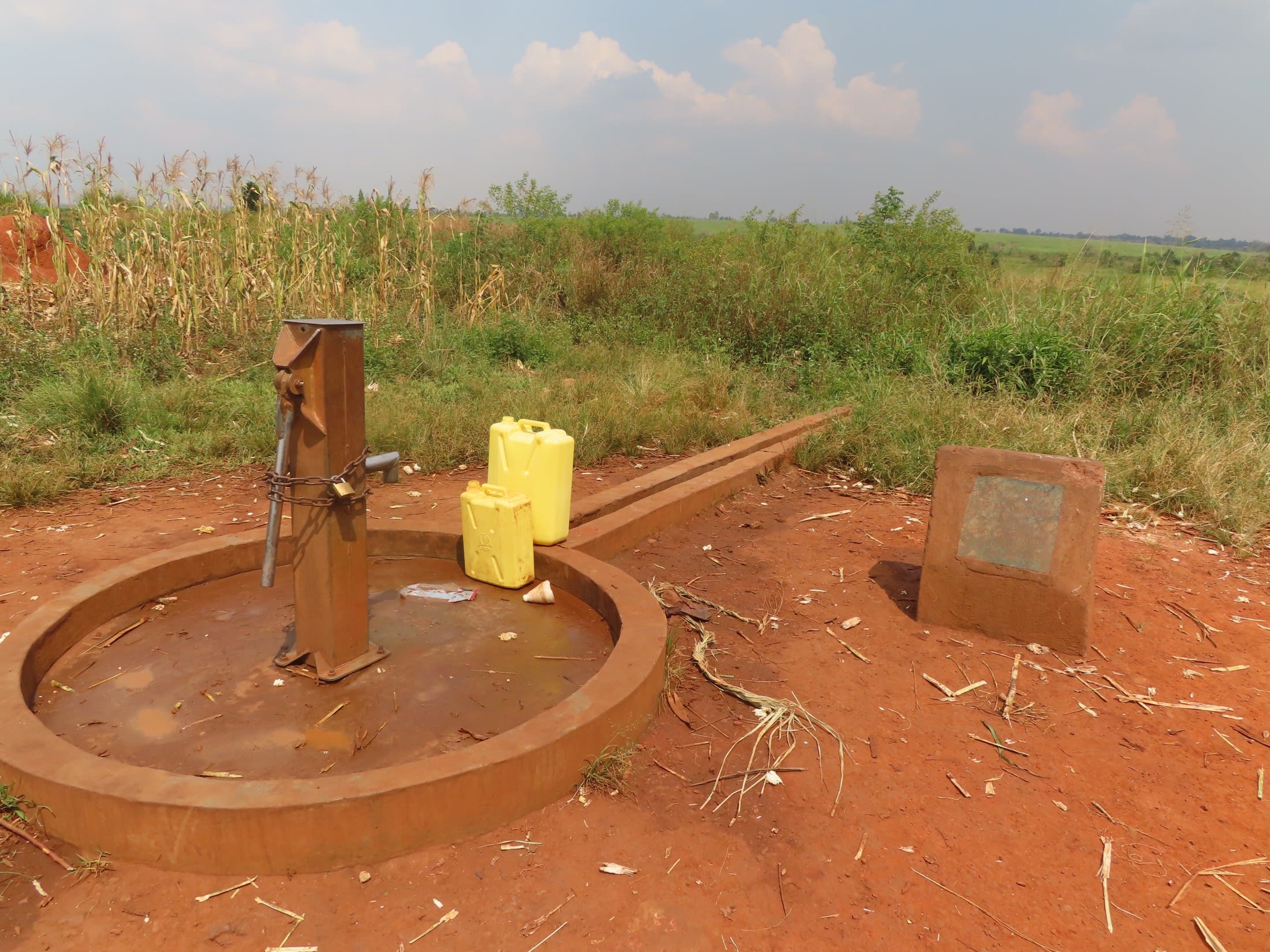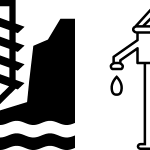The 80 community members of Katugo struggle to access sufficient water. There is a hand-dug well in the community that has dried up and a borehole well in a nearby community, but it is overcrowded, and access is restricted. People are left unable to collect the water they need to meet their daily needs.
"The main water source is currently dry, and water is not flowing; however, the alternative water sources are very congested and locked most of the time, and people don't have easy access to them," said our field officer Susan Alobo. The locked well in the nearby community is shown below.

"Since our shallow well dried up, we have been having challenges accessing water from other water points. Each time I go to collect water from the neighboring water point, we are denied since it's always locked. I take a lot of time [to collect water] due to the heavy congestion and end up returning home late, and my activities are also affected. The sanitation situation in my home has highly deteriorated since I have to use the little water I collect sparingly," said 32-year-old farmer Agnes Paramwa, shown below carrying water.

Without adequate water, everything becomes more challenging for community members, even for the youngest among them.
"There is always a lot of congestion each time the water point is unlocked. People struggle to collect water, and the elder people always deny us [the] opportunity to collect water even when we came before them. Several fights happened at the source, and one day I got scared and came back home without water to wash my uniforms. This made me miss school the following day," said 12-year-old Lillian K., shown below carrying water.
 The installation of a well will enable people like Agnes and Lillian to have sufficient water to meet their needs so they can focus on taking care of their daily responsibilities instead of wasting their time and energy fighting for water.
The installation of a well will enable people like Agnes and Lillian to have sufficient water to meet their needs so they can focus on taking care of their daily responsibilities instead of wasting their time and energy fighting for water.
The Proposed Solution, Determined Together...
At The Water Project, everyone has a part in conversations and solutions. We operate in transparency, believing it benefits everyone. We expect reliability from one another as well as our water solutions. Everyone involved makes this possible through hard work and dedication.
In a joint discovery process, community members determine their most advantageous water solution alongside our technical experts. Read more specifics about this solution on the What We're Building tab of this project page. Then, community members lend their support by collecting needed construction materials (sometimes for months ahead of time!), providing labor alongside our artisans, sheltering and feeding the builders, and supplying additional resources.
Water Access for Everyone
This water project is one piece in a large puzzle. In Kenya, Sierra Leone, and Uganda, we're working toward complete coverage of reliable, maintained water sources that guarantee public access now and in the future within a 30-minute round trip for each community, household, school, and health center. One day, we hope to report that this has been achieved!
Training on Health, Hygiene & More
With the community's input, we've identified topics where training will increase positive health outcomes at personal, household, and community levels. We'll coordinate with them to find the best training date. Some examples of what we train communities on are:
- Improved hygiene, health, and sanitation habits
- Safe water handling, storage & treatment
- Disease prevention and proper handwashing
- Income-generation
- Community leadership, governance, & election of a water committee
- Operation and maintenance of the water point



 Rehabilitation Project
Rehabilitation Project























